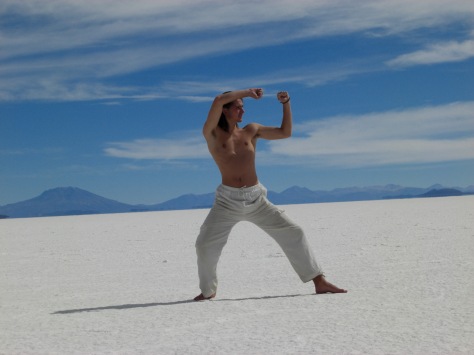You never see someone trying to knock down a door with just an itty bitty little tap. Nope! They karate chop that door with their foot because they know that unless they apply enough force, the door isn’t going anywhere.
Sometimes in our writing we try to make an impact on our readers using passive or tired verbs. They lack impact too. Time to try to mix it up a bit and maximize the impact you have on your readers.
Read the following sentence:
Emily was walking on the sidewalk when out of nowhere came a cyclist and bumped her to the ground.
How can we tweak this sentence to pack more punch?
*Start by looking for the passive verbs. Passive verbs are usually preceded by a form of the word ‘is’ and refers to something being done. In the sentence above we see ‘was walking’. This is an example of a passive verb. Let’s change it.
Emily skipped along the sidewalk. (Now we have replaced the passive and added a bit of feeling to the verb. Everything is happy.)
*Rearrange words to maximize the action. Starting with a prepositional phrase or nonaction at the beginning of the sentence makes it weaker. Let’s change it.
Emily skipped along the sidewalk. A cyclist came out of nowhere and bumped her to the ground. (By putting the noun first we see the action right when we get to the sentence.)
*Replace weak verbs with more powerful ones and flavor with visual imagery. Look for words that you overuse or are commonplace and replace them with words that create a visual image. Let’s try it.
Emily skipped along the sidewalk. A cyclist barreled over the curb and slammed her body to the pavement.
This is a very basic revision. How can you add to this to make the imagery and verbs come alive on the page? Try it out below.

